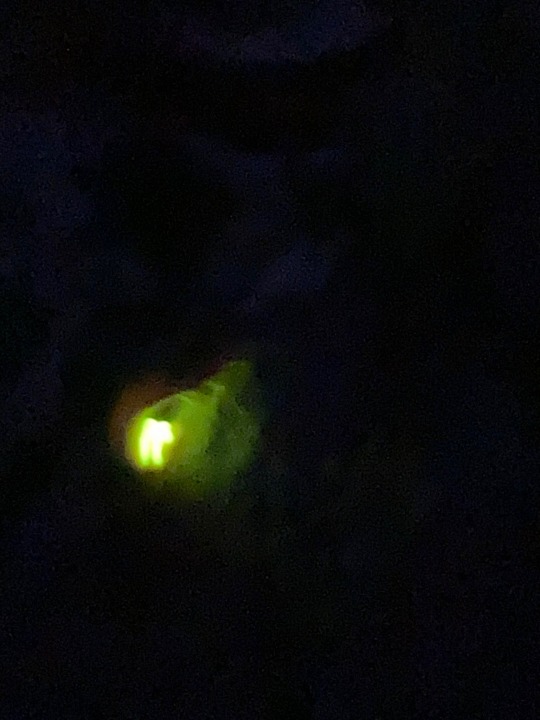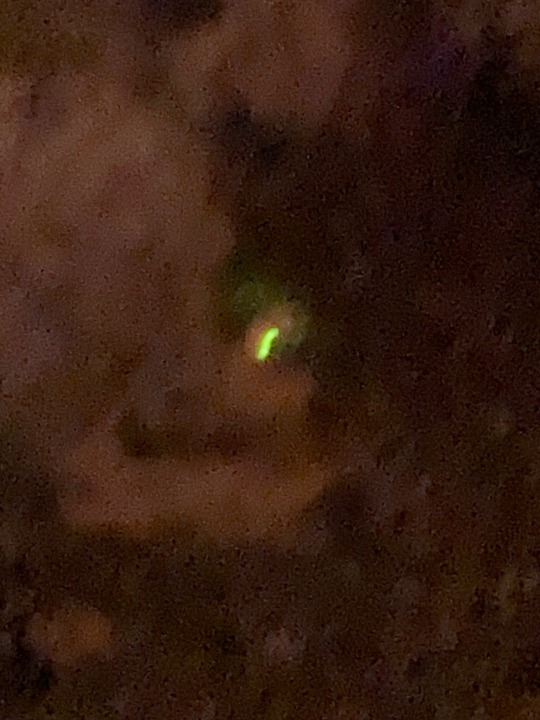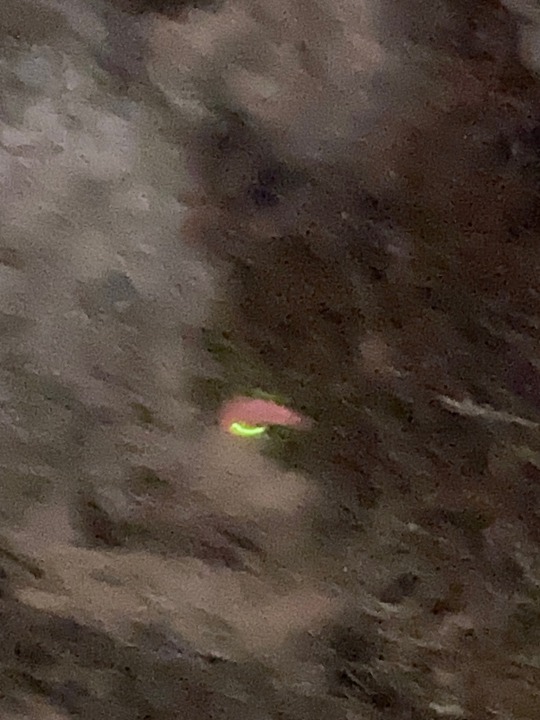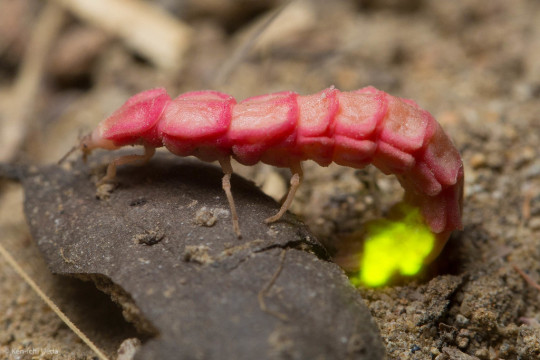#california pink glowworm
Text

A California pink glowworm (Microphotus angustus), the larval form of a firefly, in Windy Hill Open Space Preserve, California, USA
by Ron Wolf
#california pink glowworm#fireflies#glow worms#beetles#Microphotus angus#microphotus#lampyridae#coleoptera#insecta#arthropoda#wildlife: california#wildlife: usa
1K notes
·
View notes
Text








#california pink glowworm#microphotus angustus#glowworm#beetles#insects#bioluminescence#sveadal#uvas canyon
15 notes
·
View notes
Note
Australian Common Garden Katydid. California Pink Glowworm. Frog-legged Leaf Beetle. Indra Swallowtail Caterpillar. Pink-striped Oakworm. Crab Spider. Bam. "Non feminine" bugs. Good day, sir.
hmmm i quite like the glow worm
11 notes
·
View notes
Text
Fantasy/sci-fi world building inspiration (part 2)
Dallol volcano, Ethiopia (volcano, neon yellow edition)
Painted Dunes, Lassen Volcanic national park (beige and pink sand dunes)
Lake Retbal, Senegal (a sea of Pepto Bismol)
Bonneville Salt Flats, Utah (a perfect mirror when flooded, optical illusion when dry)
Richat Structure, Ouadane Mauritania (Earth’s version of the giant swirl on Jupiter)
Black Forest, Germany (fairy-tale forest, creepy edition)(yes this is where the ham comes from)
Moss Swamp, Romania (the yassified version of Shrek’s swamp)
Giant Kelp Forest, California (pretty sure they went here in Finding Dory)
Yakushima forest, Japan (fairy-tale forest)
The Tarkine Rainforest, Tasmania (fairy-tale forest, Tasmanian edition)
Sequoia National Park, California (biggest trees in the world. Also where they filmed Star Wars)
La Chiva Beach, Puerto Rico (bluest beach in the world)
Honopu beach, Kauai (giant ocean cliffs in Hawaii)
Crystal Cave, Bermuda (millions of white stalactites over crystal-clear water)
Reed Flute Cave, China (giant cave, rainbow edition)
Waitomo Glowworm Cave, New Zealand (like glow-in-the-dark stars stuck to the roof of a cave, but more magical)
Skocjan Cave, Slovenia (ENORMOUS scary-yet-awesome double-cave system)
Eisriesenwelt ice cave, Austria (largest ice cave in the world)
Krubera cave, Georgia (deepest cave on the planet)
#worldbuilding#moorkavia#writing#fantasy#scifi#scifi inspiration#scififantasy#star wars#travel#bucket list#placesyouveneverheardof#places
18 notes
·
View notes
Photo

PINK GLOWWORM
Microphotus angustus
©Ken-ichi Ueda
Females of this species never morph into winged firefly beetles, but morph instead into ‘larviform’ reproductive adults; not really worms at all. However, the males of this species do morph into non-glowing winged fireflies ready to embark on the hunt of their night-lives: the bright glows of their instinct’s desire.
The female Pink Glowworm is not a blinking firefly like those back east; but rather shines forth with a bright steady neon-green glow waiting for her suitor to see her glow and come down for a visit. The adult female has only about ten days before her light producing abilities cease. If a male does not find her by then her lineage comes to an end.
But happily, most Pink Glowworms do meet up; the eggs are laid in the soil under moist leaf litter, and the larvae hatch and begin their secretive lives by munching on small soft bodied invertebrates such as earthworms, snails, and other insect larva.
Look for the light of Pink Glowworms within our foothills during spring and early summer nights, typically within oak woodlands. (source)
#microphotus angustus#©ken-ichi ueda#females glow#males do not#california#insect#coleoptera#beetle family#larviform#mountain valley living#animals#firefly#pink glowworm#arthropods
81 notes
·
View notes
Text
Hyperallergic: Elaborate Halloween Costume Tips from a 19th-Century Guide to Fancy Dress
Costume for “the Witch” from Fancy dresses described : or, What to wear at fancy balls (1887) (via Internet Archive)
In March of 1883, Alva Vanderbilt threw one of the most lavish parties of the Gilded Age. Alva herself came as a Venetian princess, and a number of men went as Louis XVI, perhaps oblivious to the fact that the king lost his head due to such excess. Yet other New York Society members on her exclusive guest list dreamed up more eccentric garb.
Alice Vanderbilt wore an “Electric Light” dress that incorporated a working light bulb, and Lila O. Vanderbilt was outfitted as a hornet. Then there was Miss Kate Fearing Strong. Not only was Strong dressed as a cat, with a ribbon tied around her neck reading “Puss,” she was dressed with cats. As Ephemeral New York writes, Strong’s dress was “complete with an actual (dead) white feline as a head piece and a gown sewn with the body parts of real kitties,” and notes that the New York Times reported that the “overskirt was made entirely of white cats’ tails sewed on a dark background.”
Miss Kate Fearing Strong in her cat dress (1883) (courtesy Museum of the City of New York)
The 1883 ball was the social event of the year, and propelled Alva Vanderbilt to the heights of the city’s elite. Still, it was far from the sole fancy dress ball of the Gilded Age, and certainly not the only one where fine ladies were adorning their luxurious dresses with dead animals. To help attendees think of new and novel costume ideas in which to strut mansions on Fifth Avenue and across the Atlantic in London, Ardern Holt authored Fancy dresses described : or, What to wear at fancy balls.
The Fashion Institute of Design & Merchandising Museum states on their blog that the book was so popular it went through multiple printings between the 1880s and 1890s. Holt also wrote a complementing publication called Gentlemen’s Fancy Dress: How to Choose it. The Internet Archive hosts a digitized version of Fancy dresses described from the collections of the University of California Libraries.
Holt opens the volume with the question: “But, what are we to wear?” Suggested options, with detailed directions on crafting the costumes, include historical figures like Catherine de Medici and Marie Stuart, mythical goddesses such as Diana, and fictional characters like Red Riding-Hood. However, there are just as many costumes that are, to use a more modern word, a bit conceptual. Windmill, glowworm, carrier pigeon, mist, postage, twilight, mushrooms, cherry pie, and air are a few that Holt’s book proposes. Some reflect the 19th-century interest in science (“Salt Water and Fresh Water” for a duo of sisters) and the fetishizing of the “exotic” in foreign nations (“Tunis Orange Girl” and “Egyptian Queen”).
Below are selections from Fancy dresses described, with many more for your Halloween costume inspiration online at the Internet Archive. As Holt writes, “It behoves those who really desire to look well to study what is individually becoming to themselves, and then to bring to bear some little care in the carrying out of the dresses they select, if they wish their costumes to be really a success.”
Costume for the Hornet from Fancy dresses described : or, What to wear at fancy balls (1887) (via Internet Archive)
Hornet: “Short black or brown dress of velvet or satin … tunic pointed back and front, with gold stripes … cap of velvet with eyes and antennae of insect.”
Costumes for Alsatian, Amy Robsart, Anne Boleyn, and Air from Fancy dresses described : or, What to wear at fancy balls (1887) (via Internet Archive)
Air: “A white tulle or gauze dress made with several skirts, one over the other, or blue over white, as light and gossamer as possible … The lower skirt is dotted about with silver swallows and other birds, the upper edged with silver fringe or lace, and covered with silver bees and a variety of insects.”
Costume for Incroyable from Fancy dresses described : or, What to wear at fancy balls (1887) (via Internet Archive)
Incroyable (1789): “Very large satin bows; powdered head tied with a queue; cocked hat, wide lace cravat; cane with gold head, quaint scissor-shaped eye-glass of the period. This is a very favourite costume.”
Costumes for Mrs. Balchristie, Blue Coat, Breton, and Carrier Pigeon from Fancy dresses described : or, What to wear at fancy balls (1887) (via Internet Archive)
Carrier Pigeon: “Full white tulle skirt over white satin skirt, with tunic in the shape of wings, composed of white feathers; pigeon in the hair and on shoulder. Band of red ribbon across bodice from right shoulder to under left arm, with leather attached; letters falling from feather fan; head-dress cap like pigeon’s head. Pigeons on shoulder.”
Costume for Dowager of Brionne from Fancy dresses described : or, What to wear at fancy balls (1887) (via Internet Archive)
Dowager of Brionne: “The costume is well suited to a matron of mature age … The material must necessarily be rich. A gold watch and keys hang at the side; gold ornaments are introduced down the side of the dress.”
Costumes for Di Vernon, Diana, Dresden China, and England from Fancy dresses described : or, What to wear at fancy balls (1887) (via Internet Archive)
Dresden China: “A newer rendering has bows of ribbons and flowers on the shoulders, with a tiny china figure in the centre; a satin chapeau bras with more flowers springing from centre; crook and high-heeled shoes.”
Costume for Magpie from Fancy dresses described : or, What to wear at fancy balls (1887) (via Internet Archive)
Magpie: “Half black, half white dress; hair powdered on one side and not on the other … magpie on the shoulder and in hair, which may be powdered or not.”
Costumes for Girl Graduate, Gleaner, Grace Darling, and Gainsborough (after the artist) from Fancy dresses described : or, What to wear at fancy balls (1887) (via Internet Archive)
Girl Graduate: “In academical robe and cap, which may be of plain or brocaded silk in black or colours … hair tied in a cue with ribbon.”
Children’s costumes for Maltese Water Carrier, Butterfly, Red Riding Hood, and Goblin from Fancy dresses described : or, What to wear at fancy balls (1887) (via Internet Archive)
Goblin: “Tight-fitting justaucorps of red; red Vandyke tunic; winged hood with cape; fork in hand.”
Children’s costumes for Pillar Post, Puritan, Old Fashioned Beau, and Harlequinette from Fancy dresses described : or, What to wear at fancy balls (1887) (via Internet Archive)
Pillar Post: “Long red satin dress; white waistcoat with placard bearing hours of collection printed on it; head-dress, square cap, the same form as top of letter-box.”
Costumes for Patience, Pansy, Polish, and Puritan from Fancy dresses described : or, What to wear at fancy balls (1887) (via Internet Archive)
Pansy: “Short white dress trimmed with deep rich-coloured violent pansies, one large, one forming the head-dress, the petals standing well round the head, like a brim.”
Costume for Esmeralda from Fancy dresses described : or, What to wear at fancy balls (1887) (via Internet Archive)
Esmeralda: “A rich gipsy dress in yellow, black, and scarlet satin, made short, trimmed with coins and gold braid … a tambourine carried in hand.”
Costumes for Folly, Flower Girl, Foolwoman, and Newhaven Fish Girl from Fancy dresses described : or, What to wear at fancy balls (1887) (via Internet Archive)
Folly: “Cap of the two shades, like an inverted cornucopia; a fool’s bauble, viz., doll’s head and skirt, carried in hand; ornaments, bells. Good mixtures of colour are pink and blue; red, yellow, and black; blue and red.”
Costumes for Effie Deans, Dress of the Empire, Maid of Athens, and Music from Fancy dresses described : or, What to wear at fancy balls (1887) (via Internet Archive)
Music: “White satin dress trimmed round the edge with tulle and black velvet, to represent the keyboard of a piano … a scarf draped across the skirt has the treble and bass clefs on the fringed ends … Two sisters might appear as Music and Painting.”
Costume for Monte Carlo from Fancy dresses described : or, What to wear at fancy balls (1887) (via Internet Archive)
Monte Carlo: “Dress, half red satin, half black velvet and lace … short skirt fringed with coins, and trimmed with cards … croupier’s rake carried in hand.”
Costumes for Nurse, Night, Olivia Primrose, and Punchinella from Fancy dresses described : or, What to wear at fancy balls (1887) (via Internet Archive)
Night: “A long black tulle fashionably-made evening dress, spangled with silver stars and crescents, silver crescent ornaments, silver belt; a crescent on the head … an owl on the shoulder.”
Find more costume tips in Fancy dresses described : or, What to wear at fancy balls (1887) by Arden Holt, online at the Internet Archive.
The post Elaborate Halloween Costume Tips from a 19th-Century Guide to Fancy Dress appeared first on Hyperallergic.
from Hyperallergic http://ift.tt/2y6PH2e
via IFTTT
0 notes
Photo

PINK GLOWWORM
Microphotus angustus
Microphotus -
©Kevin Thomas
Size: 1" The glowworms appear in late May and early June when the temperatures increase. The female of this species never metamorphosizes into an adult beetle. She has just ten days to attract a male to mate with. The female glow is a bright LED type green. The male does become an adult beetle and glows only very faintly.
Other photos you my enjoy:
Mardi Gras Cockroach
Trilobite Beetle
Two Shocking Pink Millipedes
19 notes
·
View notes